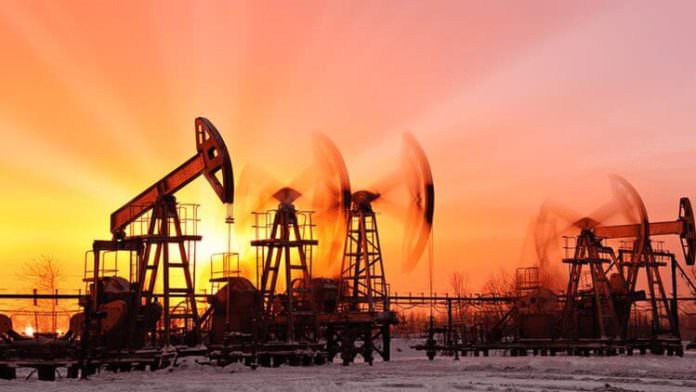
.
Are Industry Participants Ready?
Since lifting its 40-year-old ban on exporting crude oil, the U.S. has opened hungry world markets to U.S. shale oil and created a new boom. Throughout the summer of 2018, U.S. crude oil exports consistently exceeded 2.0 million barrels per day, doubling the amount of exports in just one year; and industry experts expect the number to double again in the next few years.
When the ban lifted, the U.S. found a ready market for its crude oil. Much of the U.S. shale oil supply is light sweet crude, which is too light for U.S. refineries but sells for a premium on the world market, particularly in Asia. By late 2017, shipments to the Asia-Pacific region accounted for one-third of U.S. oil exports. Global energy market demand, on the whole, is increasing at a rapid pace. It looks as though the U.S. will not only achieve the “energy independence” politicians have craved for decades, but the country is also on track to becoming one of the world’s largest net exporters.
Oversupply Leads to More Export Opportunities
In July and Aug. 2018, the U.S. became the world’s largest oil producer for the first time since the 1960s, surpassing Saudi Arabia and Russia’s production levels at 10.8 and 11.0 million bpd in production. With production expected to rise as high as 16.0 million bpd in the next few years, the U.S. is well positioned to be the top oil producer in the world. Shale leads the way, thanks to technological advancements and the huge numbers of wells being drilled which has lowered costs dramatically in the last five years.
Furthermore, the production profile of a shale oil well also means that the drilling investment can often be paid off in one or two years instead of 10 or more years — required for major offshore developments. This combination of lower costs and quick returns is leading to significant investment in the U.S. shale oil industry that will ensure production continues to grow.
This is not the first time the U.S. has been a top producer and exporter. In the late 1950s and early 1960s, the U.S. was considered a net energy exporter, producing and shipping more than it imported. Industry experts believe the U.S. could attain this position again as soon as 2022 — ushering in a “Second Era of Energy Dominance.” If current trends continue, by 2025 the U.S. will be in the top five for crude oil exports, top two for LNG exports, and the largest exporter of refined products and NGLs. This will place the U.S. in the unique position of being both the world’s largest consumer, producer, and exporter or energy.
Market Risks Rise as the U.S. Energy Market Continues to Grow
Any period of significant growth comes with its fair share of growing pains, and U.S. energy businesses must be prepared to mitigate risk — both on domestic and global scales. Exporting these new production volumes of crude can generate better returns for producers and marketers. But those returns require a higher degree of portfolio management. Exporters now must consider multiple delivery locations, currency fluctuations, and new logistical options in conjunction with geopolitical risks.
In the early 2000s, producers were only concerned with gathering systems, pipelines and limited truck movements for a well-understood and stable domestic market. Now, logistical concerns are much broader and far more complex with thousands of truck and rail movements, greater pipeline optionality and blending prior to delivery. With exports, vessels need to be considered with the possibility of multiple product deliveries in different ports and even countries. Additionally, one may need to use different assets to deliver to say, the Port of Corpus Christi, then a refinery in Corpus Christi, TX.
Even producers that keep operations onshore will see more volatility in pricing as U.S. oil is more closely tied to global markets, which impacts risk and hedging strategies. Adding to this complexity are the transportation and storage constraints that come with increased production. Investments are being made in transportation infrastructure which brings increased efficiency and optionality. However, investment dollars are flowing in at a rate is below the production growth so, for the next several years, constrained logistics assets will be the norm.
Geopolitics also play a major role in managing a number of risks, especially pricing. Because small percentage changes in supply or demand can greatly impact prices, even a single major consumer or producer of energy can impact market volatility. For example, some Chinese consumers have turned to other markets, such as Libya, for light, sweet crude imports in the wake of evolving U.S.-China trade tensions. This is driving a significant amount of trading and hedging associated with securing supplies and selling products for impacted companies. Finding the optimal strategies to deal with these tensions and uncertainties can have a significant impact upon profitability.
Preparing for the Unknown
Energy companies must be prepared for the only thing that is certain in the market — uncertainty. Because many U.S.-based energy businesses designed their commodity management processes prior to the shale boom, they are having to make big changes in order to keep pace with the evolving global market. To be truly successful in both domestic and global energy markets, U.S. businesses must have the tools and capabilities that enable them to combat additional complexity and risk. Real-time insight into global market data, asset optimization tools to handle vessel-borne transportation and risk management capabilities for foreign currencies are critical.
Today, forward-looking energy organizations are turning to enterprise commodity trading and risk management (CTRM) software with advanced analytics, such as Allegro Horizon, to harness all the challenges and opportunities that accompany global energy market changes. Allegro’s flexible and extensible CTRM software brings transparency to complex portfolios that consist of physical and financial positions across a variety of commodities. As a result, businesses experience greater trader productivity, enhanced risk management capabilities, improved accounting and settlement, and simplified compliance. Allegro also handles pipeline, vessel, barge, rail, and truck-based logistics in any combination, as well as the inventory present throughout the supply chain, thus giving one the tools to handle today’s increasing complex logistics.
Just as advances in hydraulic fracturing paved the way for shale oil’s dominance, the right CTRM software can establish U.S. net export global preeminence by helping companies seize the opportunities of the new energy reality and prepare for the risks inherent with these opportunities.
About the author: Richard Murphy is Product Manager for Crude Oil with Allegro Development Corp., a provider of commodity management software for companies that buy, sell, produce, or consume commodities.














